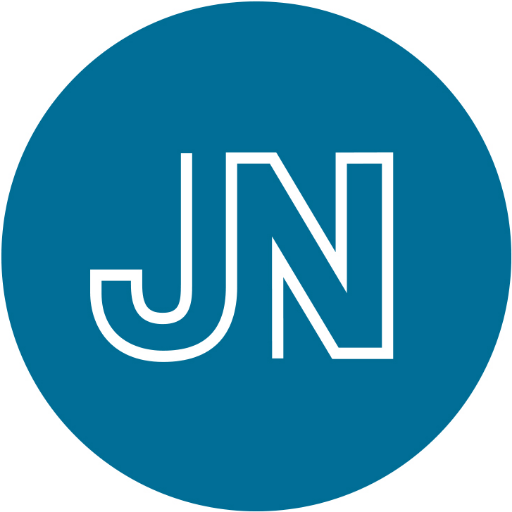
Neil Keshvani
@NeilKeshvani
Followers
509
Following
5K
Media
29
Statuses
176
Current @utswnews cardiology fellow, past @utswimchief, @iumedschool
Dallas, TX
Joined December 2008
GWTG HF Study finds overall referral rates for patients eligible for cardiac rehab is only 25% and participation is <5%. Referral rates have risen since 2014 with the expansion of coverage but opportunity still exists. #GWTGResearch
https://t.co/M6BHVi8cYX
pubmed.ncbi.nlm.nih.gov
CR referral rates have increased from 2010 to 2020. However, only 1 in 4 patients are referred to CR. Among eligible patients who received CR referral, participation was low, with <1 of 20 particip...
0
7
16
Cardiac rehabilitation for HF referral rates have increased from 2010 to 2020 Among eligible patients who received CR referral, participation was low, with <1 of 20 participating in CR. An Analysis From the GWTG-HF Registry | Circulation: Heart Failure
ahajournals.org
BACKGROUND: Coverage for cardiac rehabilitation (CR) for patients with heart failure with reduced ejection fraction was expanded in 2014, but contemporary referral and participation rates remain...
1
8
18
Fantastic UTSW CardioMetabolic Research Unit dinner yesterday evening at AHA! @ambarish4786 @thomasjwang1
0
4
54
GWTG-HF data finds HFrEF patient care remained high during the COVID-19 pandemic, but pts. with both HF and COVID-19 patients had higher risk of in-hospital mortality and LOS than pre-pandemic times. @neilkeshvani @ambarish4786 @gcfmd #GWTGResearch
https://t.co/Zi7pSKqFFE
onlinelibrary.wiley.com
Heart failure (HF) quality of care and in-hospital mortality during the COVID-19 pandemic. ACEi, angiotensin-converting enzyme inhibitor; ARB, angiotensin receptor blocker; ARNi, angiotensin recept...
0
3
2
Research from @UTSWNews about a different way hospitals should be evaluated, with more focus on the patient.
dmagazine.com
UTSW research says the current system may be missing the mark.
0
3
10
Southern migration of @IUMedSchool alumni continues! @UTSWNews
0
0
13
An accompanying commentary discusses possible system-level interventions to reduce shocks in end-of-life situations @JAMAInternalMed
0
0
0
Many patients with ICDs who elect for DNR status do not have their preferences regarding their ICD addressed, and shocks at end-of-life can cause pain and suffering
1
0
1
Our piece published @JAMAInternalMed advocates for considering a patient’s ICD status in discussions regarding end-of-life care with current @UTSWIMchief IM residents @S_A_Kelly and @RyanKabirMD @UTSWCardfellow
ICDs are integral in cardiac care, however, defibrillation at the #endoflife may not accurately reflect the patient's goal of care. This Teachable Moment highlights the necessity of evaluation of the ICD when having an end-of-life discussion
2
2
20
Overall 30-day Home Time reclassifies ~30% of hospitals in performance as compared to 30-day readmission and should be considered as a hospital-level performance measure @CMSGov
1
0
1
The home time metric is patient-centered and describes the amount of time a patient spends at home and outside of a hospital or healthcare facility and correlates with 30-day readmission and mortality
1
0
0
Our study highlighting 30-day home time as a quality metric in heart failure was published @JAMACardio. This study builds on our work @CircAHA highlighting home time as a metric in MI care w/ @ambarish4786 @saketgirotra
https://t.co/yjo7mIViCA
jamanetwork.com
This cohort study assesses home time after hospitalization for heart failure through Medicare administrative claims data and its association with 30-day risk-standardized readmission rates and...
2
5
32
One of the most rewarding aspects of my two weeks as a @UTSWCardfellow has been the ability to prescribe #GDMT like #ARNI #SGLT2i to the most vulnerable patients @Parkland without difficulty. Quality of care should not depend on ability to pay out of pocket costs
0
1
38
Link to the full paper: https://t.co/72rQNjT5lw
@thomasjwang1 @dhjutsw1 @guptaarjun90 @DinoKazi @UTSWCardfellow @GailPetersonMD @josephahill
ahajournals.org
Background: The utility of 30-day risk-standardized readmission rate (RSRR) as a hospital performance metric has been a matter of debate. Home time is a patient-centered outcome measure that accounts...
0
0
3
Our hope is that the home time metric may lead to greater scrutiny into utilization of post-acute care facilities by discharging hospitals and encourage preferential use of home-health care as well as higher performing post-acute care facilities.
1
0
2
While no metric can be absolutely "gaming"-proof, we hope that the comprehensive nature of the home time metric would make it more sensitive to approaches which adversely effect patient care.
1
0
1
However, intentional withholding of indicated post-acute care may contribute to excess readmission and/or mortality events, which would adversely affect hospital performance based on the home time metric and speaks to the value of a composite metric for hospital performance
1
0
1
As an unintended consequence, It is plausible that utilization of home time may disincentive use of SNF and LTACs in patients who are frail and require these services in the post discharge period.
1
0
2
These observations highlight the need for a more shared approach to value-based care and associated financial incentives such that both discharging hospitals and the post-acute care facilities are held accountable for 30-day patient outcomes
1
0
1









